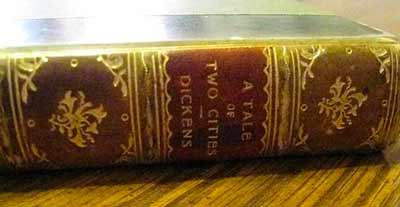The Response-to-Literature Essay
by Owen Fourie
~ Part Two ~
In Part One of this article, we considered the difference between the summary essay and the response essay, your choice of a focal point, and the questions that you need to ask in order to develop support for your thesis. In this second part, we’ll look at what is needed in the introduction, the body, and the conclusion of your essay. There is a point about paragraphing at the end of this post.
Write the Introduction
In the introduction, you need to do five things:
- In a complete sentence, state the title, the author, the publisher, and the date of publication.
- In a brief statement (one sentence, if possible) tell what is the gist of the work. (Examples of points 1 and 2 are given in “How Do I Write a Summary Essay?”)
- Briefly describe what you have chosen to critique, for example, the background issues that prompted the writing;
- State your thesis;
- Enumerate the points through which you will develop your critique. (In the correct procedure, you will have completed an outline where your major points are listed.)
Compose the body
As you proceed to the body paragraphs, you develop your critique using the points on your outline. If you have four major points that make up your critique, you should devote at least one paragraph to each one.
Let’s say that you have an assignment to respond to A Tale of Two Cities by Charles Dickens, and you have chosen to deal with the background issues that prompted the writing and the author’s purpose.
Perhaps your thesis would state that Dickens succeeded in using the situation in France in the mid to late eighteenth century to awaken the minds of his readers to the conditions in England seventy years after the French Revolution. This is a valid thesis even though such a revolution did not occur in England as Dickens and others feared it might.
(The suggestion of this thesis is simply for the purpose of illustration in this article. Ideally, you should always take as your thesis statement something that is far less obvious, something that has escaped the attention of others.)
In the body of your essay, you would devote one paragraph to the historical issues, another to the economic conditions, the third to the politics, and the last to the social situation. You would be looking at these four categories as they occurred earlier in France and as they were found in the author’s time and place in England seventy years or so later. You would also be careful to provide supporting evidence for each claim that you make. In this way and by your research, you would set out to prove your thesis, which is your opinion and your response to this particular piece of literature.
Wrap it up
Unlike the summary essay where you do not have a conclusion apart from the resolution of the plot you have described, a response essay requires your conclusion. Be sure to do the following:
- Refer to your outline to check that you have covered all the points in your writing;
- Reduce the substance of your major points to a brief summary for your conclusion;
- Restate your thesis and affirm that you have succeeded in proving it by the points you have made;
- Give your overall impression of the work;
- Try to tie the whole essay together in a final sentence that could perhaps state the relevance of the novel’s message and your thesis to our time.
Consider paragraphing
I would like to conclude this post with a brief consideration of paragraphing. This concerns all your academic writing, so its relevance is not confined to the response essay.
If you observe carefully, you will note the difference between the older type of literature and writing today particularly as you find it on the Internet and especially in blogs. It is the difference in the length and structure of paragraphs.
In the older literature, you will see that the paragraphs are generally longer and correctly formed with an opening topic sentence followed by supporting sentences and concluding with a transitional sentence to the substance of the next paragraph. Each paragraph develops a particular point.
The way paragraphing is done now is not necessarily correct. Paragraphs tend to be short and sometimes contain only one sentence. This is done quite deliberately to make the task of reading easier with plenty of white space. This serves to encourage the reader to get through the text. Longer paragraphs seem to make reading a hard task.
For your academic writing, however, you are expected to write longer paragraphs that focus on a point–a topic–that is developed logically to a conclusion that leads into the next point in a new paragraph. Do not take the present trend in paragraphing as a guide for your academic writing.
—–
What is your experience with writing response-to-literature essays? Do you have any useful insights? What are your particular struggles? What is the level of prescribed reading that must be completed in your institution before a student is required to write a response-to-literature essay? Which form of paragraphing do you find easier to read–the older literary style or the shorter form that you see in blogs? Your comments, observations, and questions are welcome.
Here are more articles to help you with English words, grammar, and essay writing.
Copyright © 2010 by English Essay Writing Tips www.englishessaywritingtips.com

